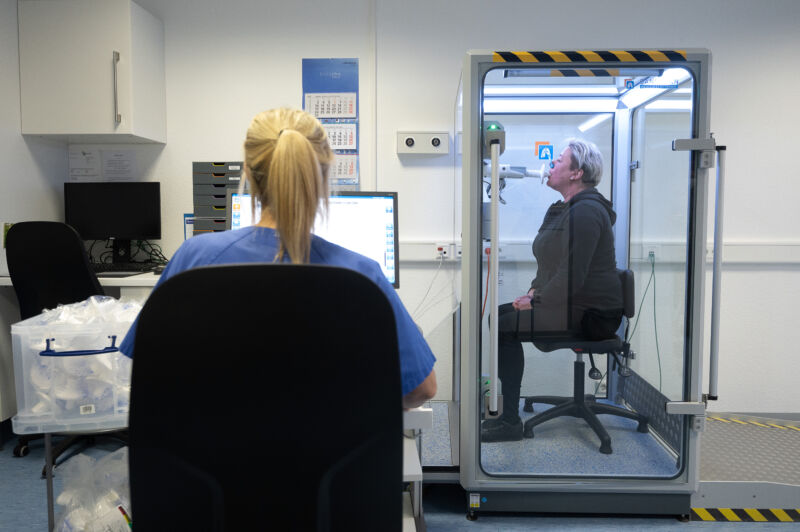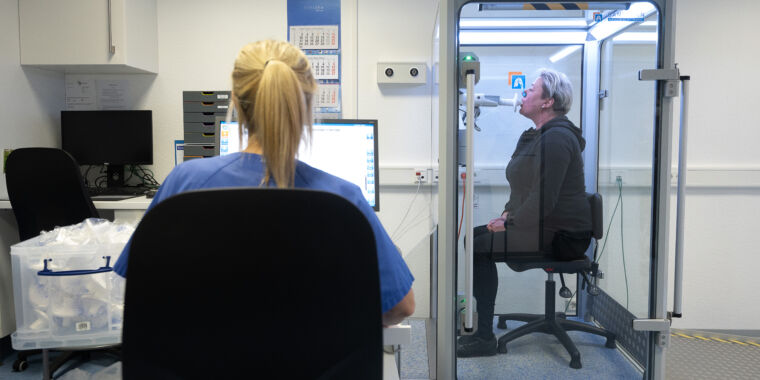
More than one in five adults in the US who have recovered from COVID-19 may end up developing a long-term condition linked to the viral infection, according to a study published this week by the Centers for Disease Control and Prevention.
The post-COVID conditions span heart, lung, kidney, cardiovascular, gastrointestinal, neurological, and mental health conditions. Overall, COVID survivors had nearly twice the risk of developing respiratory and lung conditions, including pulmonary embolisms, compared with uninfected controls. The most common post-COVID conditions were respiratory conditions and musculoskeletal pain.
Among COVID survivors, people ages 18 to 64 were more likely than older survivors to develop cardiac dysrhythmia and musculoskeletal pain. The risks for survivors 65 and up were greater for kidney failure, blood clots, cerebrovascular disease, muscle disorders, neurological conditions, and mental health conditions.
In the older age group, “post-COVID conditions affecting the nervous system are of particular concern because these conditions can lead to early entry into supportive services or investment of additional resources into care,” the authors wrote. And for the 18-to-64 age group, post-COVID conditions could particularly “affect a patient’s ability to contribute to the workforce and might have economic consequences for survivors and their dependents.”
With more than 83 million cases of COVID-19 reported in the US—and the actual number of infections likely significantly higher—the findings mean that millions could develop long-term symptoms, requiring additional care and resources. ” Therefore, implementation of COVID-19 prevention strategies, as well as routine assessment for post-COVID conditions among persons who survive COVID-19, is critical to reducing the incidence and impact of post-COVID conditions, particularly among adults aged ≥65 years,” the authors conclude.
Study design
For the study, the authors mined electronic health records from a national, de-identified database containing information on 63.4 million adult patients from all 50 states. CDC researchers identified 353,164 patients diagnosed with COVID-19 between March 2020 and November 2021. They then matched each COVID-19 patient in a ratio of one to five with 1,640,776 control patients who had visited a health care facility during the same month as the COVID-19 patients’ diagnosis but weren’t diagnosed in the study’s time frame. All of the survivors and controls were monitored for at least a month and up to a year.
Patients who had a history of any of the 26 conditions previously linked to COVID-19 were excluded from the study.
Overall, 38.2 percent of COVID-19 survivors developed a post-COVID condition, compared with 16 percent of uninfected controls. In the 18 to 64 age group, 35.4 percent of survivors developed a post-COVID condition, compared with 14.6 percent of controls. In the 65 and up group, 45.4 percent of survivors developed a post-COVID condition, compared with 18.5 percent of controls.
The absolute risk difference between the percentage of COVID survivors and controls who developed a post-COVID condition was 20.8 percentage points for those between 18 and 64, and 26.9 percentage points for those 65 and up. Based on those calculations, the CDC estimates that one in five adults from 18 to 64 and one in four adults aged 65 and up developed at least one post-COVID condition.
The study has several limitations, including only tapping into electronic health records from one software source, creating the possibility that the results are not generalizable to the entire US. It also did not account for different SARS-CoV-2 variants and some demographic details, such as geographic location. And because it is based on electronic health records, it may be biased toward those who more readily seek care.
Still, the authors note their findings are “consistent with those from several large studies that indicated that post-COVID incident conditions occur in 20-30 percent of patients,” they write. And overall, they conclude, “these findings can increase awareness for post-COVID conditions and improve post-acute care and management of patients after illness.”








